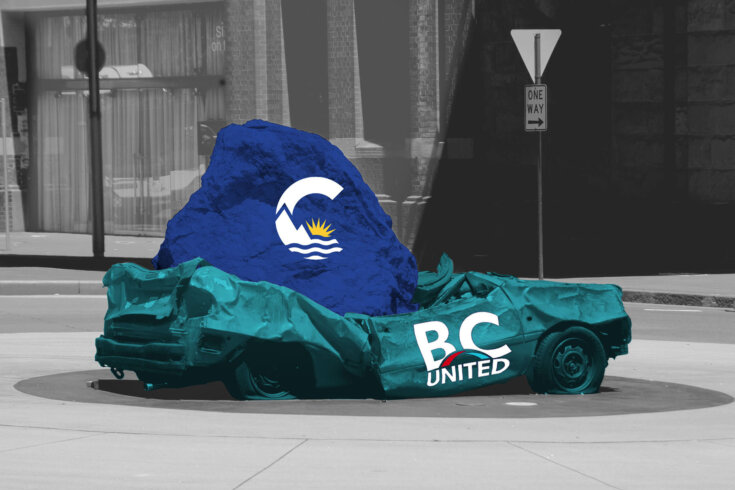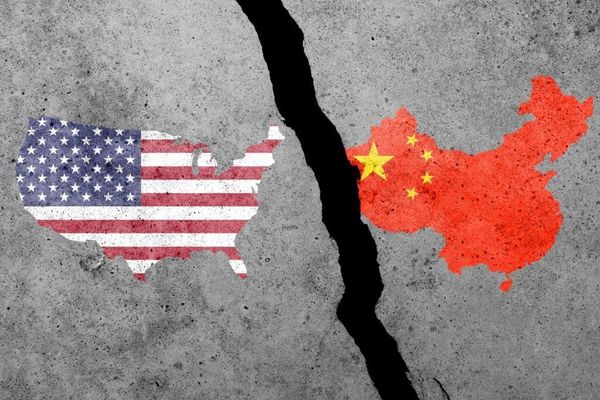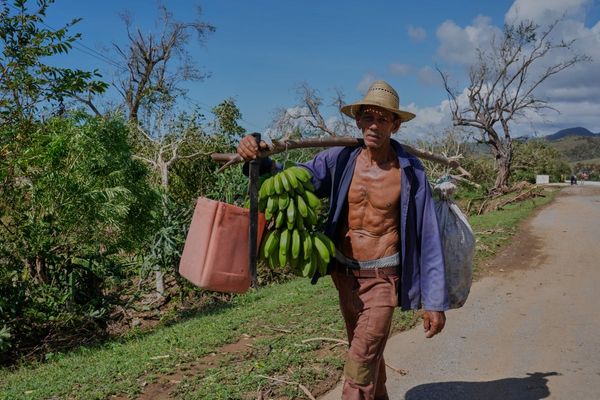
The past year and a half has been unusually eventful in British Columbia politics: multiple floor crossings in the legislature, a major party rebrand, and dramatic movement in public opinion polls. In fact, polling from multiple sources confirms that, with only weeks to go before the fall campaign for the provincial election kicks off, BC politics may be undergoing a massive generational realignment.
The chart below depicts two BC polls from the Vancouver-based polling firm Research Co., fielded fourteen months apart. On top, the May 2023 poll was fielded a few weeks after the British Columbia Liberal Party officially changed its name to BC United, in part to distance itself from perceived federal Liberal connections and to rejuvenate its image before the 2024 election. Across the province, David Eby’s New Democratic Party led the field (as it had done in every poll since the NDP’s re-election in 2020) with 46 percent of province-wide support, thirteen points ahead of the newly rebranded BC United. The Greens took third place with 16 percent.
As for the then fringe Conservative Party of British Columbia, they sat dead last with a measly 4 percent of support, a result marginally better than the 1.9 percent they had won in the 2020 general election. Since becoming leader of the Conservatives, John Rustad (MLA for Nechako Lakes, who crossed the floor to the Conservatives after being kicked out of the BC Liberal caucus) had not yet managed to put his party on the map.
Fourteen months later, in a poll released in late July, Research Co. measured a statistical tie between the incumbent NDP (41 percent) and the surging Conservatives (38 percent), with the Greens in a tough spot with only 10 percent of support.
BC United, however, has fallen to single-digit support (9 percent) across the province. After dominating BC politics for most of this century, they could potentially fade into the void. Rarely do political parties come back from such a crushing loss.
What happened?
Although abrupt, this realignment did not happen overnight.
The floor of the Centre des congrès de Québec was abuzz last September for the national Conservative convention. Delegates were chatting away, Poilievre and anti-Trudeau merch was flying off the shelves, and I sat at the print media table, filing on the latest polls released that morning. Fresh federal numbers from Abacus Data showed the Conservatives with a fourteen-point lead nationally over the Liberals, the highest gap between the two parties in years (that gap would grow wider in the following months). Jubilant supporters of the Conservative Party of Canada who spotted my name on my badge kept stopping me to ask whether this was real.
Later that day, I recall, one delegate told me: “Watch the numbers out of BC later today. Something big is coming.”
I had Abacus’s numbers fresh on my mind. The federal poll showed Pierre Poilievre’s Conservatives with a crushing seventeen-point lead in BC—which would translate into several net gains for the Conservative Party of Canada in the province if such support held until the next election.
“What, a lead bigger than seventeen points?” I asked.
“No, I meant provincially,” he said. “Rustad’s taking off.”
He then told me to expect floor crossings soon.
Hours later, a BC provincial poll from Mainstreet Research was out and made the convention floor euphoric: NDP at 35 percent, Conservatives 27 percent, BC United 22 percent.
Just as the federal Conservatives were taking off and distancing themselves from the field in popular support, the provincial Conservatives out in BC, shamelessly and openly riding Poilievre’s coattails, had suddenly become serious contenders. While Eby’s NDP remained in first place in voting intentions, the Rustad Conservatives had leapfrogged the Greens and were in a statistical tie with BC United.
Mere days later, Abbotsford South MLA Bruce Banman crossed the floor from BC United to the Conservatives, joining Rustad and doubling the size of the BC Conservative caucus.
From August to October 2023, four polls from high-rated polling firms (Mainstreet Research, Research Co., Leger, and the Angus Reid Institute) observed the same trend: BC United were losing support left and right, and the Conservatives were working hard to replace them.
A near-perfect split on the right was a dream scenario for the NDP. Imagine a hypothetical election where about half of BC United voters would support the Conservatives while the NDP vote held strong—a reverse Ontario, if you will. Projections showed the NDP could climb as high as seventy to eighty seats in the ninety-three-seat legislature in Victoria due to the numerous potential vote splits that could fall into the NDP’s lap if it faced off with a divided right.
But, for that to happen, BC United had to hold its own. Unfortunately for leader Kevin Falcon and his team, numbers through winter and spring showed continued bleeding, and the party’s MLAs began their exodus. From October 2023 to July 2024, eleven BC United MLAs announced they would not run in the next provincial election. Add three more defections to the Conservatives, and that’s more than half the twenty-eight-member caucus elected under the British Columbia Liberal Party banner in 2020 that decided to call it quits under Falcon’s leadership.
As mentioned above, Research Co.’s July figures measured the NDP still on top, but breathing down its neck are the Conservatives at 38 percent, twenty-nine points ahead of BC United. While the NDP led the Conservatives in Metro Vancouver and Vancouver Island, the Conservatives held a significant advantage over the NDP in the all-important Fraser Valley region. Using these numbers, the latest projections still favoured the NDP to win the fall election but by a “normal” margin over the Conservatives—not the blowout that was forecast last fall.
As for BC United? Battling with the Greens for a distant third place everywhere. The most likely scenario would see BC United wiped out of the map.
Obviously, the campaign has not started, and not a single ballot has been cast, so we must be careful not to draw hasty conclusions. It would be foolish, however, to completely ignore the data and the trend lines measured from multiple credible sources since last year.
The BC general election this October could potentially reshape provincial politics on the West Coast for decades to come. An NDP government in its seventh year in power dragged by unpopular policies (from drug decriminalization to the carbon tax), a reorganized and correctly branded right-of-centre party boosted by its dominant federal cousin, and a crumbling party with a new name and colours getting squeezed in between—the textbook electoral casualty whenever political polarization sharpens its blades.







